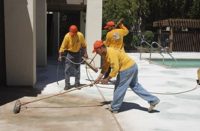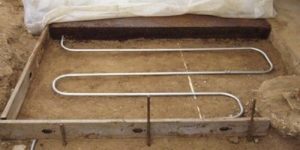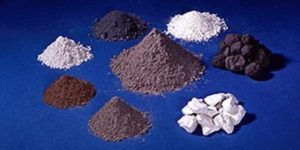Concrete contractors often tell me that they don’t have any input in the green aspects of the jobs they work on. By the time the concrete sub is hired, those decisions have been made, so what’s the use of even bothering?
That may be true, but your general contractor or owner could be concerned about sustainability and counting on your contribution to increase their project’s overall sustainability. In some cases, the difference between who gets a job could come down to little things like a bidder’s green approach to the construction process. One way to demonstrate your commitment, and incidentally, to cut some expenses, is to green up your own internal operations by looking at your office procedures, transportation practices and on-site operations.
Office sustainability
Let’s start by looking at a few things you can do to improve your office’s sustainable practices. One of the best resources I’ve found is a checklist created by the North Carolina Department of Environment and Natural Resources.
You can download this checklist at www.p2pays.org/ref/05/04040.pdf. Most of these ideas not only contribute to sustainability, but also will save you money.
Paper use: Number one on the list of waste generated in the office is paper. Twenty years ago when computers became ubiquitous in our offices, claims were made that we were moving towards paperless operations. Instead, computers and copiers gave us the ability to generate paper at unprecedented rates. Office paper accounts today for about 6 percent of the entire waste stream – in 1960 it was only about 1.7 percent and in 1994 it was 3.2 percent. Here are a few ideas for ways to reduce paper use. Some of these may seem a little silly, but lots of little things can add up:
- Use both sides of paper, either by having two-sided printers and copiers or by reusing draft paper that has already been printed on one side.
- Use e-mail instead of paper correspondence.
- Circulate documents instead of printing copies for everyone.
- Reuse old paper for notepads.
- Provide glass desktops and erasable markers for note-taking (just like on the TV show “Numb3rs”).
- Set up documents single-spaced and with narrower margins.
- Get electronic versions of magazines and newspapers instead of the paper versions.
- Buy notepads with narrow lines. People follow the lines and can get more on a page.
- Get plans and specifications electronically and submit bids online.
Office equipment: Remember that true sustainability encompasses the ideas of life-cycle costs and durability. Buying equipment that will last longer instead of having to be replaced every couple of years greatly reduces your impact on the environment. Printers, copiers, computers – even light bulbs – should be purchased with longevity in mind. And always look into upgrading rather than replacing, especially with computers. A work-over has lower impact and can save you time and money.
Recycling and reusing: Develop an office recycling policy and make sure everyone is aware that you are serious about it. Increase the number of recycling bins and reduce the number of trash cans. Put up signs to make it clear what can be recycled and enforce the policy. Buy regular ceramic coffee cups instead of paper.
Power use: This one can save you significant costs without huge effort. One study documented a 50 percent reduction in power use by office equipment after office workers were told how to set their power controls. Get programmable thermostats and let it get a little cool in the winter and warm in the summer. Open the blinds to increase solar heat gain where possible. Have your IT person set everyone’s computer to cycle into hibernation mode when not used for an hour or so. Get rid of screen savers – today’s monitors don’t really need them and they use power. Unplug chargers and transformers when not in use – they continue to suck up power even when disconnected. Turn off the lights!
Indoor air quality: Billions of dollars in lost productivity and medical care each year are lost due to poor indoor air quality, according to the Environmental Protection Agency. Some offices have found much lower rates of absenteeism when their air quality is improved. You can get some guidelines on improving IAQ at the EPA’s Web site (www.epa.gov/iaq). The simplest way to improve IAQ is by making sure you have sufficient ventilation and fresh air. Change furnace filters and ban smoking. Also, buy less toxic cleaning products.
Transportation
Concrete contractors spend a lot of time on the road, going to job sites, supply houses and project meetings. Insist that your company and employees do everything possible to improve fuel economy. The first thing, obviously, is to buy fuel-efficient vehicles. You can even go all out and look into hybrids, although the options are pretty limited, especially for trucks. At the Edmunds vehicle information Web site (www.edmunds.com), there are interesting articles about fuel consumption. Lots of other information is available. The Department of Energy even has a Web site on fuel economy (www.fueleconomy.gov). Here are a few tips:
- No aggressive driving. Edmunds found drivers often improved fuel economy by more than 30 percent simply by taking it a little easier. Also, accelerating rapidly sucks up fuel.
- Don’t speed. Reducing your top speeds can reduce fuel consumption by around 10 percent.
Get tune-ups. According to Edmunds, poorly tuned engines decrease gas mileage by about 4 percent. A faulty oxygen monitor can reduce efficiency as much as 40 percent. - Use cruise control. Edmunds found an increase in fuel economy from using the cruise.
- Air conditioning is fine. This one might surprise you, but Edmunds found no significant difference between using the air conditioning and driving with the windows wide open.
- Check tire pressure. Despite President Obama’s advice, tire pressure only saves a little. Underinflated tires often cause less than a 5 percent loss in fuel economy, according to Edmunds. However, tire pressure is important for increasing tire life and safety. Check it monthly when the tires are cold, and inflate to the vehicle-recommended pressure, not to the maximum pressure on the side of the tire.
On the job site
There are lots of things you can do on a job site to improve your sustainability. We’ll cover this more thoroughly in a future column, but one thing to consider is recycling. In North America, about 2.5 pounds of waste per square foot of floor space is generated during construction. A significant portion of that waste is recyclable, and the pressure to do so is either on you now or soon will be.
C&D (construction and demolition) waste is a huge part of the American waste stream – about 40 percent – and with landfill space dwindling, local jurisdictions are pushing the problem back to the source. Today, more than 140 million tons of concrete are recycled each year. In Seattle, contractors are required to divert 80 percent of their waste to recycling.
Crushed concrete is actually becoming a valuable product in many areas, especially for projects trying to gain LEED credits. Since it is heavy, its contribution adds up quickly. Some concrete contractors have even gone so far as to purchase their own crushers. Tilt-up contractors often place temporary casting beds, then have to remove those slabs after construction ends. Leaving crushed concrete on-site is a great alternative.
Developing your own sustainability plan is simple, can save you money and perhaps will win you some work. Submitting a copy of your sustainability policy with each bid will grab some attention.















